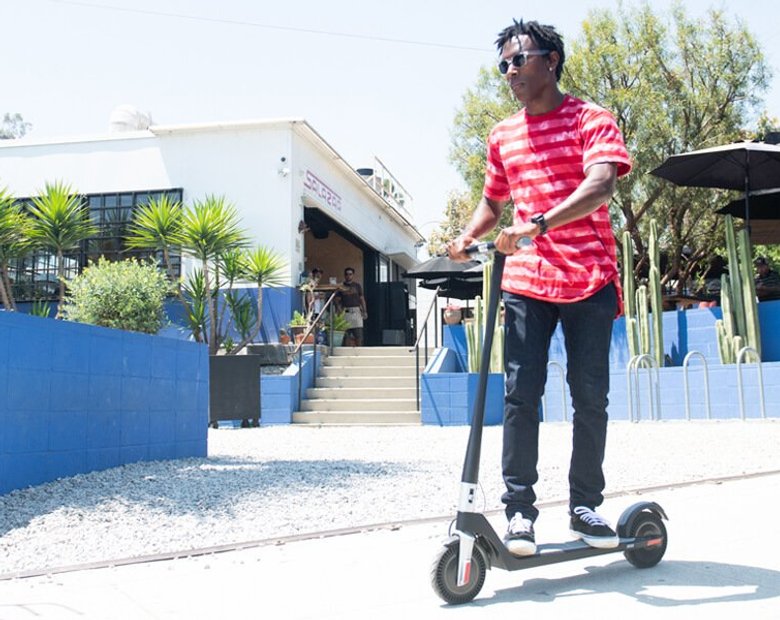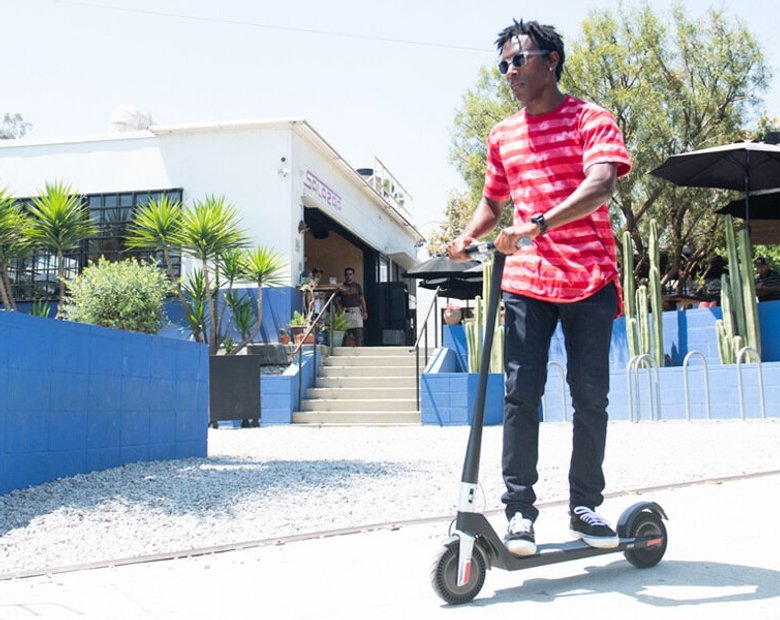Mobility scooter battery life varies depending on the model and usage, typically ranging from 10 to 30 miles per charge. Mobility scooters provide an essential means of transportation for individuals with mobility limitations.
To ensure uninterrupted operation, understanding battery life is crucial. The battery life of a mobility scooter is determined by factors such as the scooter’s model, battery capacity, and usage patterns. Generally, mobility scooters can travel distances ranging from 10 to 30 miles on a single charge.
Choosing a scooter with a longer battery life is essential for those who require extended usage without frequently recharging. We will explore the various factors that contribute to mobility scooter battery life and provide tips for maximizing battery efficiency.
Factors Influencing Mobility Scooter Battery Life
When it comes to mobility scooters, battery life is a crucial factor to consider. After all, the longer the battery lasts, the more freedom and independence it provides. But have you ever wondered what factors can influence the battery life of a mobility scooter? In this article, we will explore three key factors that can have a significant impact on how long your mobility scooter battery lasts: battery capacity, usage frequency, and terrain and conditions.
Battery Capacity
Battery capacity refers to the amount of charge that a battery can hold. Generally, mobility scooters come with different battery capacity options. A higher capacity battery can provide a longer runtime before needing to be recharged. It is important to consider your individual needs and usage patterns when choosing the battery capacity for your mobility scooter. Factors such as weight, distance to be covered, and the level of assistive features used can all influence the battery capacity required. So, make sure to opt for a battery with sufficient capacity to meet your specific requirements.
Usage Frequency
How frequently you use your mobility scooter can also impact battery life. The more often you use it, the more frequently you will need to recharge the battery. It is recommended to follow the manufacturer’s guidelines for charging and discharging the battery. Overcharging or undercharging the battery can affect its overall lifespan. By properly managing the usage frequency and following the recommended charging practices, you can ensure a longer battery life for your mobility scooter.
Terrain And Conditions
The terrain on which you use your mobility scooter plays a significant role in battery consumption. Uneven surfaces, inclines, and rough terrain require more power from the battery to overcome the resistance. Similarly, extreme weather conditions such as heat or cold can affect battery performance. It is advisable to avoid using the scooter on extremely hilly or rough terrains for an extended period and to store the scooter in a climate-controlled environment to maintain optimal battery performance.
In conclusion, understanding the factors influencing mobility scooter battery life is essential to optimize the performance and longevity of your scooter. By considering the battery capacity, managing usage frequency, and being mindful of the terrain and conditions, you can maximize the battery life of your mobility scooter. Now that you are equipped with this knowledge, you can make informed decisions when purchasing, using, and maintaining your mobility scooter for a hassle-free and extended battery life experience.

Credit: unagiscooters.com
Maximizing Mobility Scooter Battery Performance
Proper Charging And Discharging
One of the key factors in maximizing the battery life of your mobility scooter is proper charging and discharging. Following these guidelines ensures that your battery remains healthy and performs optimally:
- Always use the charger provided by the manufacturer for your specific mobility scooter model.
- Before charging, make sure the battery is not excessively discharged. It is recommended to charge the battery when it reaches approximately 20-30% capacity.
- When charging, plug the charger directly into a wall outlet and avoid using extension cords or power strips.
- Allow the battery to fully charge without interruption. Avoid unplugging the charger prematurely.
- Do not leave the battery in a fully discharged state for an extended period of time, as this can result in irreversible damage.
- Conversely, avoid overcharging the battery. Once it is fully charged, disconnect the charger to prevent overloading.
Regular Maintenance
Regular maintenance of your mobility scooter’s battery is essential for prolonging its lifespan. Here are some maintenance practices that you should follow:
- Check the battery connections regularly and ensure they are clean and securely fastened. Loose or corroded connections can lead to poor performance.
- Keep the battery and its surroundings clean and free from dirt, dust, and debris. This helps to prevent any build-up that can affect the battery’s efficiency.
- Inspect the battery for any signs of damage, such as cracks or leaks. If you notice any issues, it is imperative to replace the battery promptly.
- Follow the manufacturer’s guidelines for battery storage, especially if you plan to leave the scooter unused for an extended period. Storing the battery in a cool, dry place can help maintain its condition.
- Consider investing in a battery maintenance device, such as a desulfator, to keep the battery in optimal condition.
Optimizing Riding Habits
In addition to proper charging and regular maintenance, your riding habits can also impact the battery life of your mobility scooter. Here are some tips to optimize your riding habits:
- Plan your trips wisely to conserve battery power. Take the most efficient routes, avoid steep inclines and rough terrain whenever possible.
- Maintain a consistent speed while riding. Rapid acceleration and sudden braking can drain the battery quicker.
- Avoid carrying excessive weight on your scooter as it increases the load on the battery, reducing its efficiency.
- Monitor the battery level during your rides and aim to maintain a suitable charge level. Avoid completely discharging the battery whenever possible.
- When not in use, turn off any unnecessary accessories or lights on your scooter to minimize battery drain.
Extending Mobility Scooter Battery Longevity
Proper maintenance and care of your mobility scooter battery can significantly extend its lifespan, ensuring you have reliable power whenever you need it. By following a few simple guidelines, you can optimize the performance of your battery and increase its lifespan. In this section, we will explore three key factors for extending mobility scooter battery longevity: storing and using the battery in optimal conditions, replacing aging batteries, and upgrading to higher capacity batteries.
Storing And Using Battery In Optimal Conditions
Storing and using your mobility scooter battery in optimal conditions is crucial for maximizing its longevity. Here are some tips to help you achieve this:
1. Keep the Battery Charged
Regularly charging your battery, even if you are not using your mobility scooter, is essential.
- Try to charge the battery after each use, preferably before it falls below 50% capacity.
- If you will not be using the scooter for an extended period, such as during winter, charge the battery fully and then disconnect it.
- Avoid leaving the battery in a discharged state for a long time, as this can cause irreversible damage.
2. Avoid Extreme Temperatures
Exposing your mobility scooter battery to extreme temperatures can reduce its overall performance and lifespan. Here’s what you should keep in mind:
- Avoid storing the battery in extremely hot or cold environments. Ideally, keep it between 50°F (10°C) and 77°F (25°C).
- If your scooter is not in use, store it in a cool, dry place away from direct sunlight and freezing temperatures.
- When charging the battery, ensure the charging area is well-ventilated.
Replacing Aging Batteries
Over time, mobility scooter batteries may start to show signs of aging, such as decreased capacity and shorter runtime. When this happens, it’s important to consider replacing the battery to maintain optimal performance. Keep these points in mind:
1. Regularly Monitor Battery Health
Regularly monitor your battery’s health to identify any decline in performance. This can be done by checking the voltage or using a battery health monitoring device. If you notice a significant decrease in capacity or if the battery is not holding a charge as it once did, it may be time for a replacement.
2. Choose a Compatible Replacement
When replacing your mobility scooter battery, be sure to select a compatible replacement with the same voltage and capacity. It’s best to consult the scooter’s manual or contact the manufacturer for guidance.
Upgrading To Higher Capacity Batteries
If you find that your current mobility scooter battery is not meeting your needs in terms of range and power, upgrading to a higher capacity battery may be the solution. Here’s what you should consider:
1. Assess Your Needs
Determine your specific requirements, such as the distance you typically travel and the duration of your trips. This will help you determine if an upgrade is necessary.
2. Consult with a Professional
Consulting with a professional or contacting the manufacturer can provide valuable insights into whether your mobility scooter can accommodate a higher capacity battery and which model would best suit your needs.
By taking proper care of your mobility scooter battery, monitoring its health regularly, and making informed decisions about replacements and upgrades, you can extend its longevity and ensure a reliable and enjoyable mobility experience.
Frequently Asked Questions For Mobility Scooter Battery Life
How Long Do The Batteries Last On A Mobility Scooter?
The battery life of a mobility scooter varies, but generally, it can last anywhere from 12 to 18 months, depending on usage. Regular charging and proper maintenance can help extend the battery’s lifespan.
How Far Can A Mobility Scooter Go On A Full Charge?
A mobility scooter can go up to a certain distance on a full charge, typically ranging from 10 to 30 miles.
How Long Does The Battery Last On A Motorized Scooter?
The battery life of a motorized scooter typically varies, but on average, it lasts between 15 to 30 miles or 1 to 3 hours of continuous use.
How Many Years Does A Scooter Battery Last?
The lifespan of a scooter battery is typically around 2 to 5 years. Regular maintenance, proper charging, and avoiding extreme temperatures can help prolong its life.
Conclusion
To optimize your mobility scooter’s battery life, remember to charge it fully before each use and avoid overcharging. Be mindful of the terrain you’re navigating, as rough surfaces can drain the battery faster. Regular maintenance, such as cleaning and storing the scooter properly, also plays a crucial role in extending its battery life.
By following these simple tips, you can make the most out of your mobility scooter and enjoy enhanced mobility and independence for longer periods.

